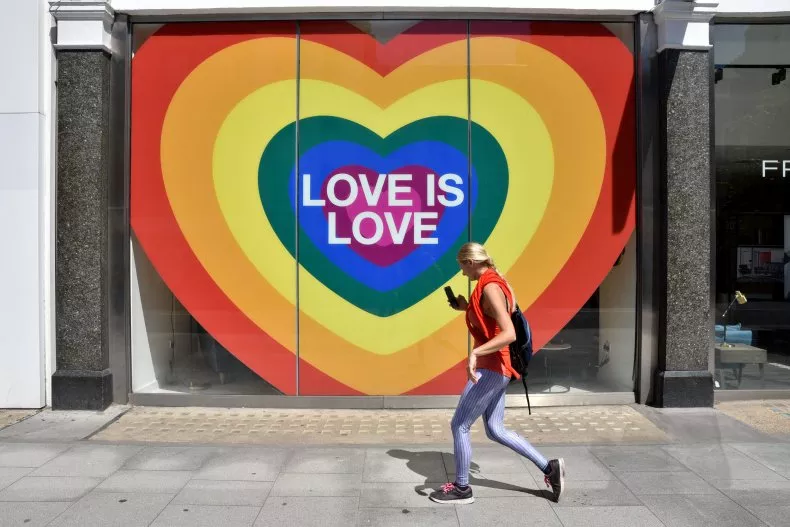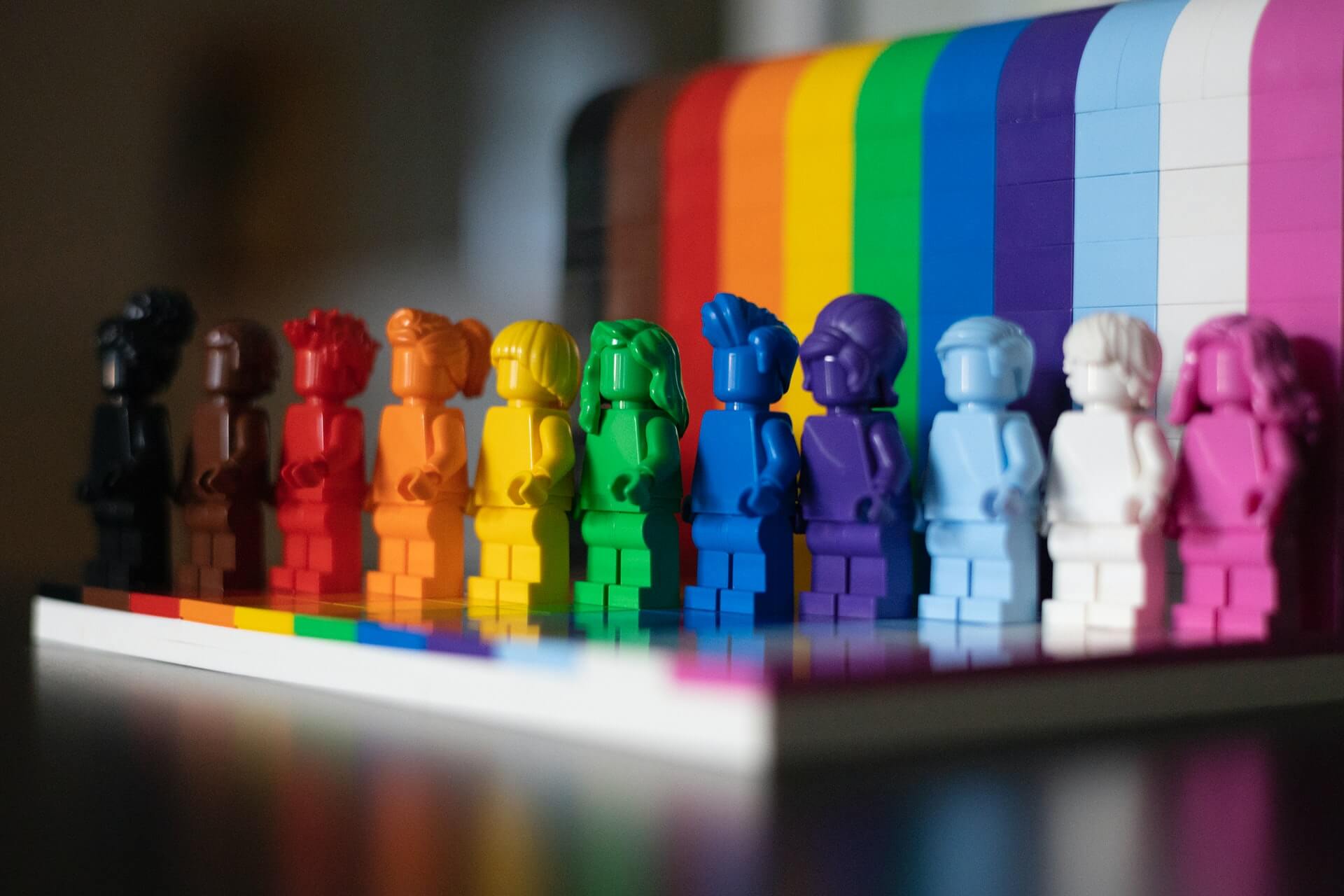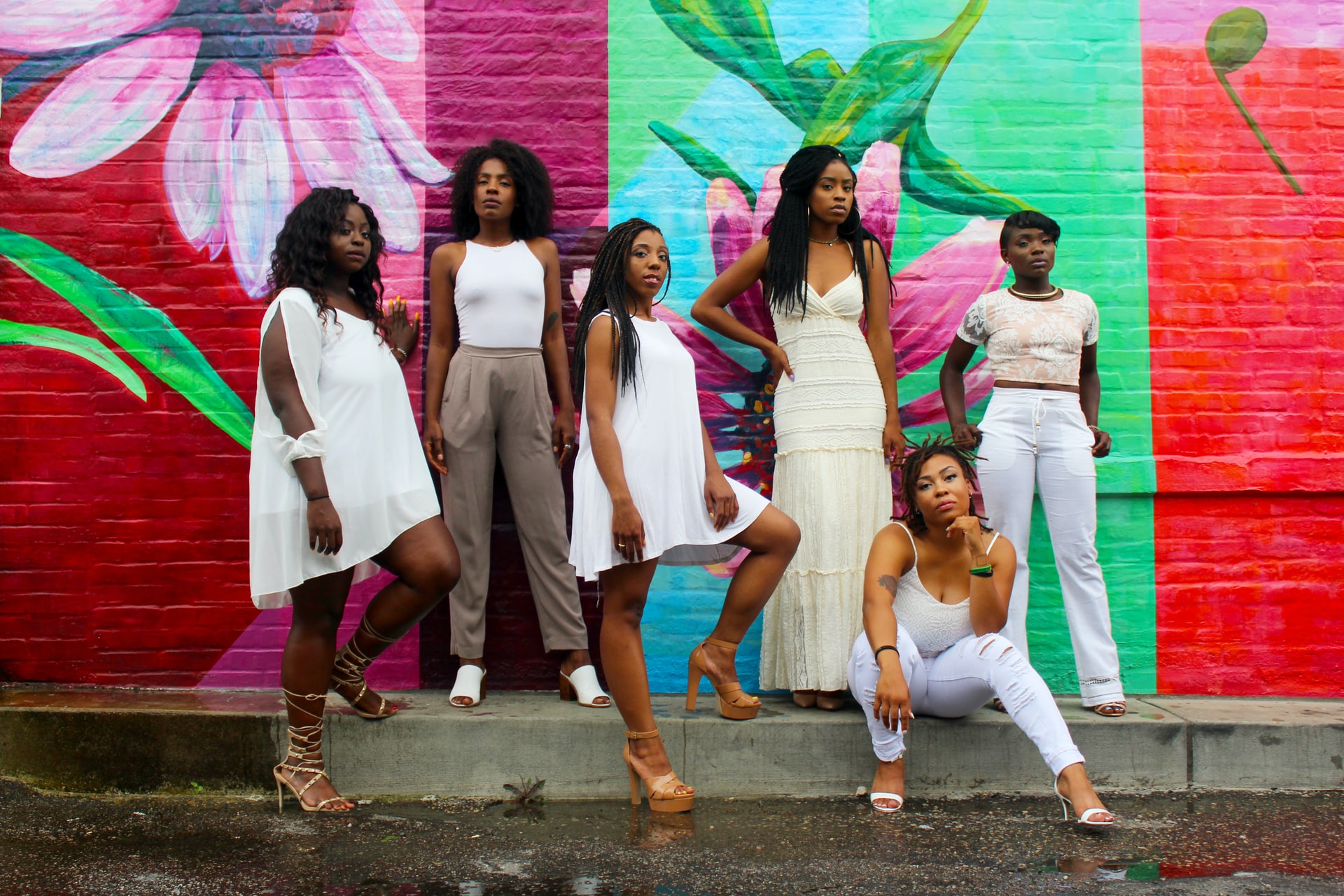Pride Month is a celebration of progress for the LGBTQ+ community. It began as a protest, with the Stonewall Riots, and grew to become an annual march fighting for LGBTQ+ equality. But in the 50 years since, Pride has become a much larger and broader international event, which has seen many businesses become, effectively, sponsors—placing the rainbow flag on their product lines, logos and even parade floats in ways unimaginable just a few years ago. But the disparity between the use of the rainbow and many businesses' lack of substantive action toward LGBTQ+ justice in the tumult of recent years is not lost on customers. Without real action backing it up, company use of the rainbow feels hollow.
While LGBTQ+ rights and acceptance have come a long way, especially since the 2015 legalization of same-sex marriage, the fact is that many are still suffering—some increasingly, particularly in the trans community where violence continues to rise against trans women of color. Last year, the Human Rights Campaign reported 44 murders of transgender and gender non-conforming people in the U.S., marking 2020 as the most violent year on record since these crimes were first tracked in 2013. Within that social context, Pride remains a vital protest movement, festive though it may be.
Companies need to acknowledge the growing divide between what many businesses are doing for Pride Month and what the LGBTQ+ community actually needs. Performing allyship is not enough; responding to new realities and demonstrating commitment to change are essential. In short, Company X can no longer just put a rainbow on its product or logo and expect to be seen as supporting Pride.
In the last few years, there has been something of a backlash against corporate efforts around Pride. In 2019, on the 50th anniversary of the first Pride March in New York City, younger activists formed a countermarch reacting against what they felt was the over-commercialization of Pride, wanting to return to its roots as a protest. The Queer Liberation March drew thousands of people and was a reminder that, no matter how you dress it up, Pride is about advocating for change. Companies that genuinely engage LGBTQ+ people, provide actual financial support where it is most needed and make real efforts to understand the ways that Pride is evolving are the ones who should get the credit for truly supporting Pride and what it stands for.
Because Pride is about both progress and protest, company involvement in Pride should focus on those in the community most in need of support and change. Right now, that particularly means trans people and people of color. Trans women of color actually brought Pride into being—not as a month in 2015 but as a day in 1970, when the original New York City Pride march celebrated the one-year anniversary of the 1969 Stonewall Riots, a freedom fight started by trans activists of color Marsha P. Johnson and Sylvia Rivera. An example of this focus is the Progress Pride Flag, created in 2018 by designer Daniel Quasar to include five new colors in a chevron, representing the importance of the trans community and people of color. It has become increasingly visible following the protests of the Black Lives Matter movement, and major corporations like Apple and Converse have begun using these newer rainbow colors in their Pride products this year. This month the colors of the trans flag even appear on Macy's flagship 34th Street store in Manhattan.

Matthew Chattle/Barcroft Media via Getty Images
These visual moves forward, while encouraging, cannot create change on their own. Fortunately, there are a growing number of companies willing to advocate for what is right and responsible, even when they might be taking a risk in doing so.
Earlier this year, companies like Coca-Cola and Delta, both based in Atlanta, voiced strong opposition to the passage of restrictive voting laws in Georgia. Many brands are now giving a percentage of Pride merchandise sales to a charity; others have gone even further. Abercrombie & Fitch Co. has an asterisk on its Pride page stating that, regardless of sales, it will be making a $200,000 donation to the Trevor Project. Donations to trans- and people of color-focused charities like the National Center for Transgender Equality, the Black Aids Institution, SNaPCo and the Trangender Law Center are particularly vital.
To trust that their use of its symbols is honest, the LGBTQ+ community needs to see a business committed to building a safe and inclusive society for all—beginning with the company itself. Hiring members of that community, particularly trans people and people of color, and engaging them deeply in creating the future of the company, is the ultimate demonstration of that commitment. Such internal diversity initiatives can create real change in the workplace—combining outreach and advertising featuring positive role models is what Starbucks has done in the U.K. Making substantive change, beyond a rainbow aesthetic, is something business leaders can take real Pride in.
Reference:
A version of this article appeared in
Newsweek.
Dean of the George Mason University School of Business in Virginia
-
Maury Peiperlhttps://www.sheskillzglobal.com/author/maury-peiperl/
-
Maury Peiperlhttps://www.sheskillzglobal.com/author/maury-peiperl/
Non-binary theatrical costumer working on Broadway in New York
-
This author does not have any more posts.



















1 comment
I really found this article interesting.